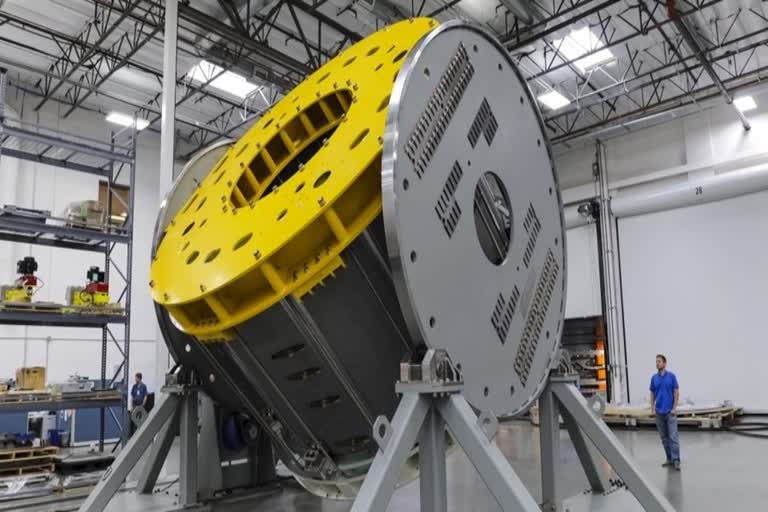New Delhi: After a decade of design and fabrication, US-based General Atomics announced that it is ready to ship the first module of the Central Solenoid. It will become a central component of ITER, a machine that replicates the fusion power of the sun.
ITER's mission is to prove that energy from hydrogen fusion can be created and controlled on Earth. Fusion energy is carbon-free, safe and economic.
Despite the challenges of COVID-19, ITER is almost 75 percent built. For the past 15 months, massive first-of-a-kind components have begun to arrive in France from three continents.
When assembled together, they will make up the ITER Tokamak a "Sun on Earth" to demonstrate fusion at an industrial scale.
ITER is a collaboration of 35 partner countries -- the European Union (plus the UK and Switzerland), China, India, Japan, Korea, Russia and the US.
Most of ITER's funding is in the form of contributed components. This arrangement drives companies like General Atomics to expand their expertise in the futuristic technologies needed for fusion.
The Central Solenoid, the largest of ITER's magnets, will be made up of six modules. It is one of the largest US contributions to ITER.
When fully assembled, it will be 18 metres (59 feet) tall and 4.25 metres (14 feet) wide and will weigh a thousand tonnes. It will induce a powerful current in the ITER plasma, helping to shape and control the fusion reaction during long pulses.
How powerful is the Central Solenoid? Its magnetic force is strong enough to lift an aircraft carrier two metres (six feet) into the air. At its core, it will reach a magnetic field strength of 13 Tesla, about 280,000 times stronger than the Earth's magnetic field.
The support structures for the Central Solenoid will have to withstand forces equal to twice the thrust of a space shuttle lift-off.
Earlier this year, General Atomics had completed the final testing of the first Central Solenoid module. This week it will be loaded onto a special heavy transport truck for shipment to Houston, where it will be placed on a vessel for shipment to southern France.
The Central Solenoid will play a critical role in ITER's mission to establish fusion energy as a practical, safe and inexhaustible source of clean, abundant and carbon-free electricity.
"This project ranks among the largest, most complex and demanding magnet programmes ever undertaken," said John Smith, GA's Director of Engineering and Projects.
"I speak for the entire team when I say this is the most important and significant project of our careers. We have all felt the responsibility of working on a job that has the potential to change the world. This is a significant achievement for the GA team and US ITER," Smith said.
The Central Solenoid modules are being manufactured at GA's Magnet Technologies Center in Poway, California, near San Diego, under the direction of the US ITER project, managed by the Oak Ridge National Laboratory (ORNL).
Five additional Central Solenoid modules, plus one spare, are at various stages of fabrication. Module two will be shipped in August.
Hydrogen fusion is an ideal method of generating energy. The deuterium fuel is readily available in seawater, and the only by-product is helium.
Like gas, coal or fission plant, a fusion plant will provide highly concentrated baseload energy around the clock.
Yet fusion produces no greenhouse gas emissions or long-lived radioactive waste. The risk of accidents with a fusion plant is very limited, if containment is lost, the fusion reaction simply stops.
Also Read: Microsoft will end Windows 10 support in Oct 2025
(Inputs from IANS)



